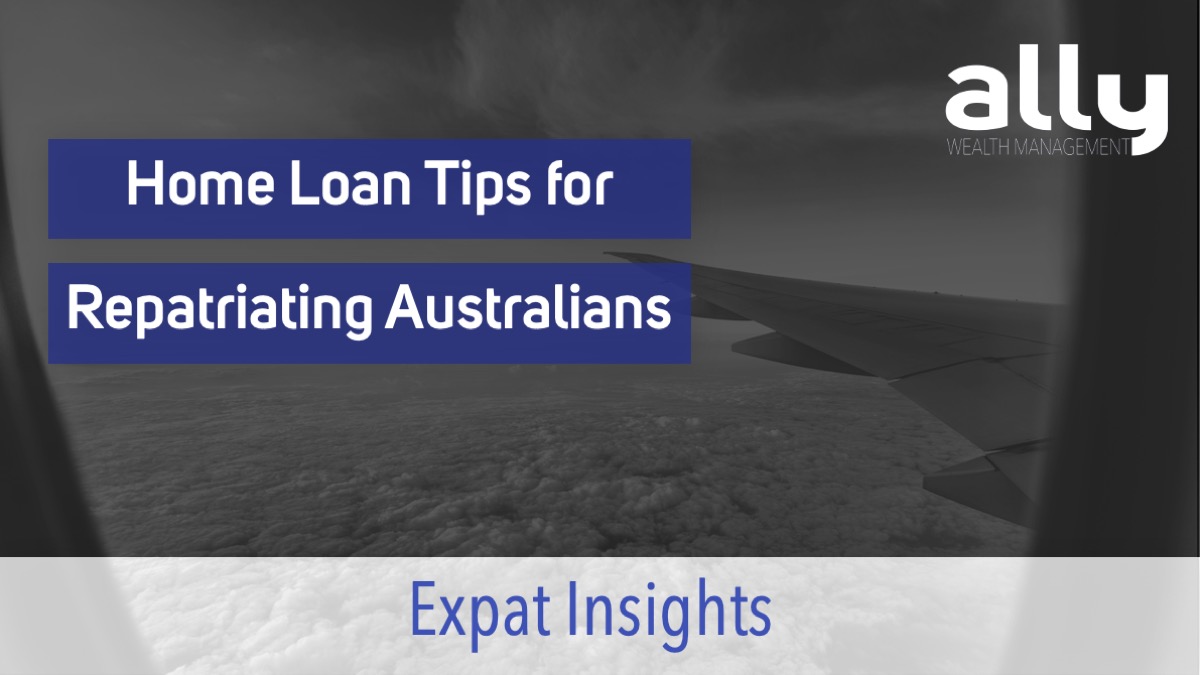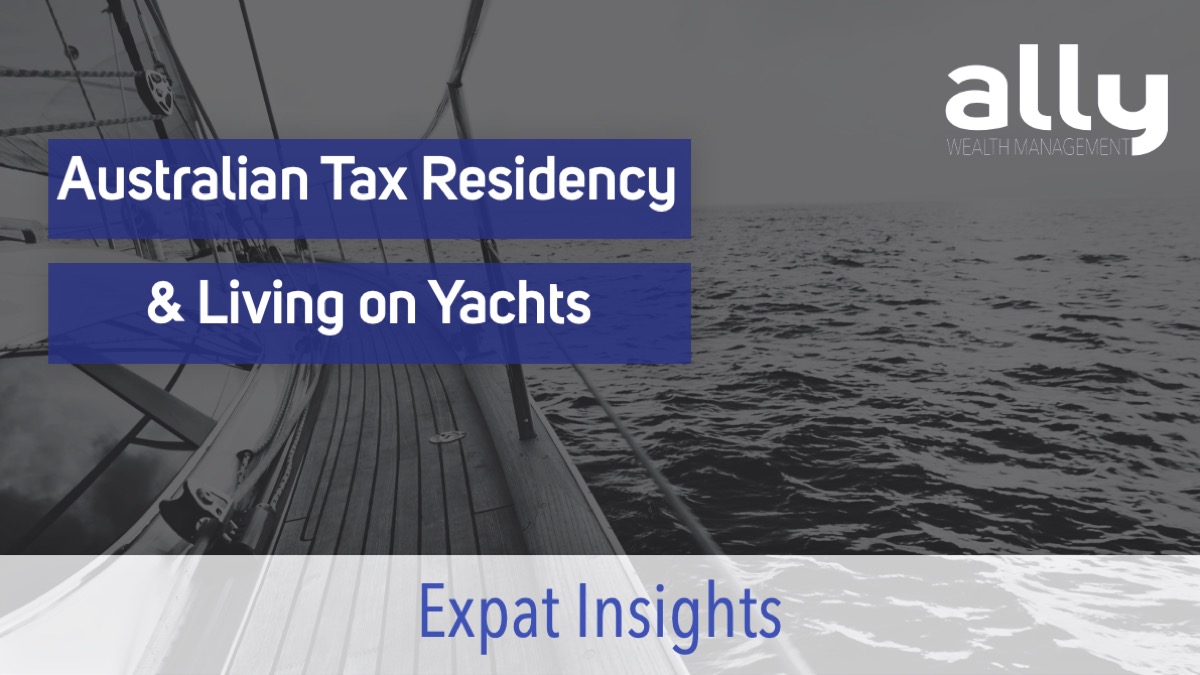Home Loan Tips for Returning Australian Expats
As an Australian expat living and working abroad, planning your return to Australia involves a great deal of planning, and one of the most critical that is often overlooked is optimising your home and investment loans. A well-structured financing strategy can offer substantial financial and tax benefits, reduce stress, and ensure a smooth transition back home.
This guide aims to provide you with detailed, actionable insights on how you can consider optimising your home loan, addressing key aspects such as tax efficiency, mortgage repayment, and financial flexibility.
Understanding Loan Structuring
Loan structuring refers to the way your loans are set up, including the types of loans, repayment terms, and interest rates. Different loan types serve various purposes, and understanding them is crucial for optimising your financial situation. Here are some common types of loans:
- Home Loans: These are used for purchasing your primary residence.
- Investment Loans: These loans are for buying investment properties.
- Interest-Only Loans: For a set period, you only pay the interest on the loan, not the principal amount.
- Principal and Interest (P&I) Loans: You pay both the principal amount and the interest, reducing your debt over time.
- Line of Credit / Equity Access Loan: This acts as a credit facility, often secured by your property, that can act as your emergency fund, or even a facility to fund the deposit on your next property.
Benefits of Reviewing Loan Structures Before Returning
- Maximising Tax Efficiency
One of the most significant benefits of reviewing and optimising your loan structure is maximising tax efficiency. Properly structured investment loans can provide valuable tax benefits, particularly if you have properties that you rent out. Here’s how:
- Interest Deductions: Interest payments on investment loans can usually be deducted from your taxable income. This can lead to significant savings, especially if you have multiple investment properties. It’s important to consider what your personal net effective tax rate will be, and therefore how effective these tax deductions will be for you.
- Debt Allocation: Redirecting funds from principal repayments on investment loans to paying down your primary residence mortgage can lower non-deductible debt, enhancing your overall tax efficiency.
By focusing on these strategies, you can ensure that your investment properties work for you, providing both income and tax advantages.
- Accelerating Primary Residence Mortgage Repayment
Another key benefit of optimising your loan structure is the potential to accelerate the repayment of your primary residence mortgage. This can be achieved through several strategies:
- Interest-Only Investment Loans: By converting your investment loans to interest-only payments, you free up cash that can be used to pay down the principal on your primary residence mortgage. This approach can significantly reduce your mortgage term and interest payments over time.
- Extra Repayments: Using any additional funds or savings to make extra repayments on your primary residence mortgage can help you pay off your loan faster, saving you thousands in interest.
- Frequency of Repayments: Another common strategy that is overlooked is taking the simple step of increasing the frequency of your loan repayments from monthly to fortnightly or weekly. You will end up repaying more, and eradicating your non-deductible debt that much faster.
These strategies not only reduce your debt faster but also provide a sense of financial security and stability, knowing that your home loan is being managed efficiently.
- Enhancing Financial Flexibility
Optimising your loan structure can greatly enhance your financial flexibility. A well-structured loan plan improves your cash flow, preparing you for future financial needs and investments. This flexibility is crucial, especially when you are transitioning back to Australia. Here’s how you can achieve this:
- Cash Flow Management: By ensuring that your loan repayments are manageable and aligned with your income, you can better manage your cash flow and avoid financial stress.
- Future Investments: With improved cash flow, you can consider future investments or financial opportunities that may arise, ensuring you are in a strong position to take advantage of them.
- Buffers: You may also wish to set up a Line of Credit, or Equity Access Loan, as part of your emergency fund for your return to Australia. This may simply be a buffer in case of emergencies, or it may be for future investment in other growth assets.
Steps to Review and Optimise Your Loan Structure
- Assess Your Current Loan Situation
The first step in optimising your loan structure is to thoroughly assess your current loan situation. This involves reviewing the types of loans you have, their terms, interest rates, and overall impact on your finances. Consider the following:
- Loan Types: Identify whether your loans are home loans, investment loans, or a mix of both.
- Interest Rates: Review the interest rates on each loan and determine if they are competitive.
- Repayment Terms: Understand the repayment terms of each loan, including whether they are interest-only or principal and interest.
By assessing your current situation, you can identify areas for improvement and begin to formulate a plan to optimise your loans.
- Consult with a Mortgage Broker
A mortgage broker can provide expert advice on the best loan structures for your situation. They have access to a wide range of loan products and can help you understand the various options available to you. When consulting with a mortgage broker, consider the following:
- Expert Advice: Mortgage brokers can provide insights into the latest loan products and interest rates, helping you find the best deals.
- Customised Solutions: They can tailor loan solutions to meet your specific needs, whether you are looking to refinance, restructure your loans, or find new loan products.
- Tax Benefits: A knowledgeable mortgage broker can help you understand the tax benefits associated with different loan structures and identify strategies to maximise your tax efficiency.
- Implementing Changes
Once you have assessed your current situation and consulted with a mortgage broker, it’s time to implement the necessary changes to optimise your loan structure. This may involve:
- Transitioning to Interest-Only Loans: If you have investment properties, transitioning to interest-only loans can free up cash to pay down your primary residence mortgage.
- Refinancing Your Mortgage: Refinancing your primary residence mortgage to a more competitive rate can save you thousands in interest over the life of the loan.
- Redirecting Savings: Use the savings from lower interest payments on investment loans to make extra repayments on your primary residence mortgage.
Additional Financial Considerations
- Understanding Tax Implications
Returning to Australia has significant tax implications, and it’s essential to plan for changes in your tax obligations. Here are some key considerations:
- Residency Status: Determine your residency status for tax purposes, as this will affect your tax obligations.
- Capital Gains Tax: Be aware of potential capital gains tax liabilities on any investment properties you sell when returning to Australia.
- Income Tax: Understand how your income will be taxed once you are back in Australia, including any rental income from investment properties.
- Planning for Long-Term Financial Goals
Repatriation is a good time to reassess your long-term financial goals, including retirement plans and investment strategies. Consider the following:
- Superannuation: Review your superannuation contributions and ensure they align with your retirement goals.
- Investment Portfolio: Assess your investment portfolio and make any necessary adjustments to ensure it aligns with your long-term financial objectives.
- Savings and Emergency Fund: Ensure you have sufficient savings and an emergency fund to cover any unexpected expenses during the transition period.
- Ensuring a Smooth Transition
Managing outstanding debts and planning your cash flow are crucial to ensuring a smooth financial transition when returning to Australia. Here’s how:
- Debt Management: Pay off any outstanding debts before you return to Australia to reduce financial stress.
- Cash Flow Planning: Create a detailed cash flow plan to manage your expenses during the transition period and ensure you have enough funds to cover any relocation costs.
Conclusion
Optimising your loan structure before returning to Australia can offer substantial financial benefits. From maximising tax efficiency to reducing mortgage terms and interest payments, the advantages are significant. By following the steps outlined in this guide and working with a knowledgeable mortgage broker, you can create a loan strategy that aligns with your financial goals, ensuring a smooth and financially advantageous transition back home.
Ally Wealth Management is the trusted ally in finance for Australians at home and across the globe. As both Australian expats and residents, the founders of Ally have a unique understanding of the common personal financial challenges faced.
Book your complimentary appointment with our team at Ally Wealth Management to discuss how we can help you to achieve your financial goals.
Ally Wealth Management Pty Ltd is a Corporate Authorised Representative of Sentry Advice Pty Ltd ABN 77 103 642 888. Sentry Advice holds an Australian Financial Services Licence (AFSL) No. 227 748.
General Advice Warning: The information contained herein is of a general nature only and does not constitute personal advice. You should not act on any recommendation without considering your personal needs, circumstances, and objectives. We recommend you obtain professional financial advice specific to your circumstances.




